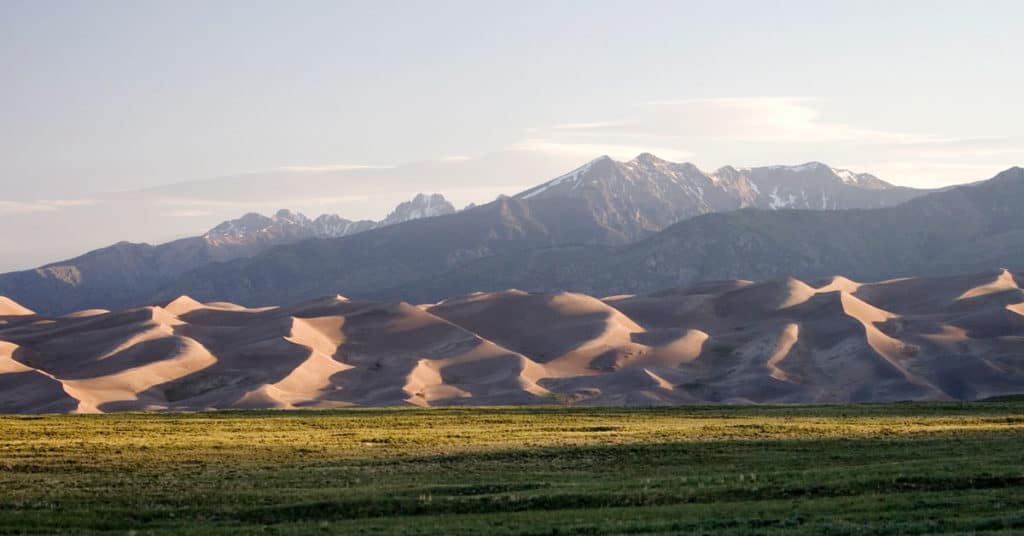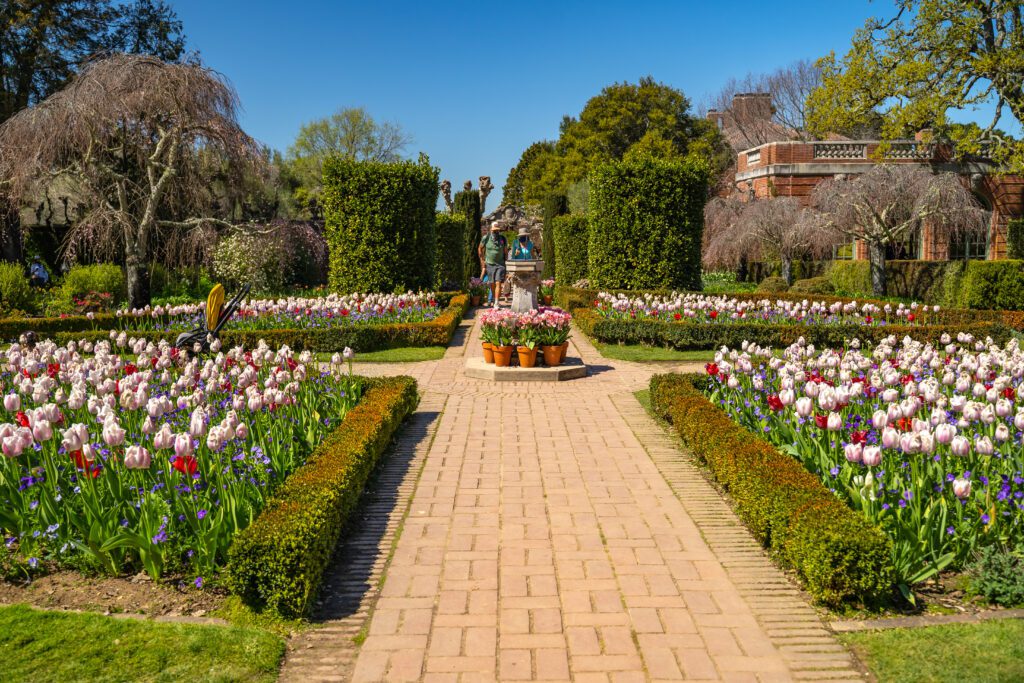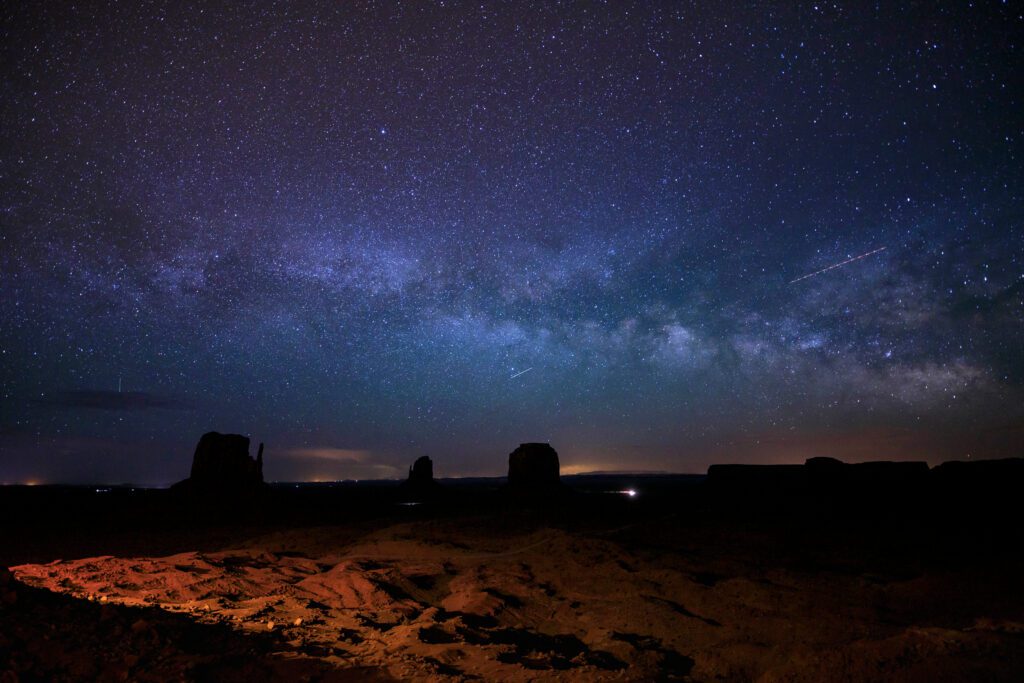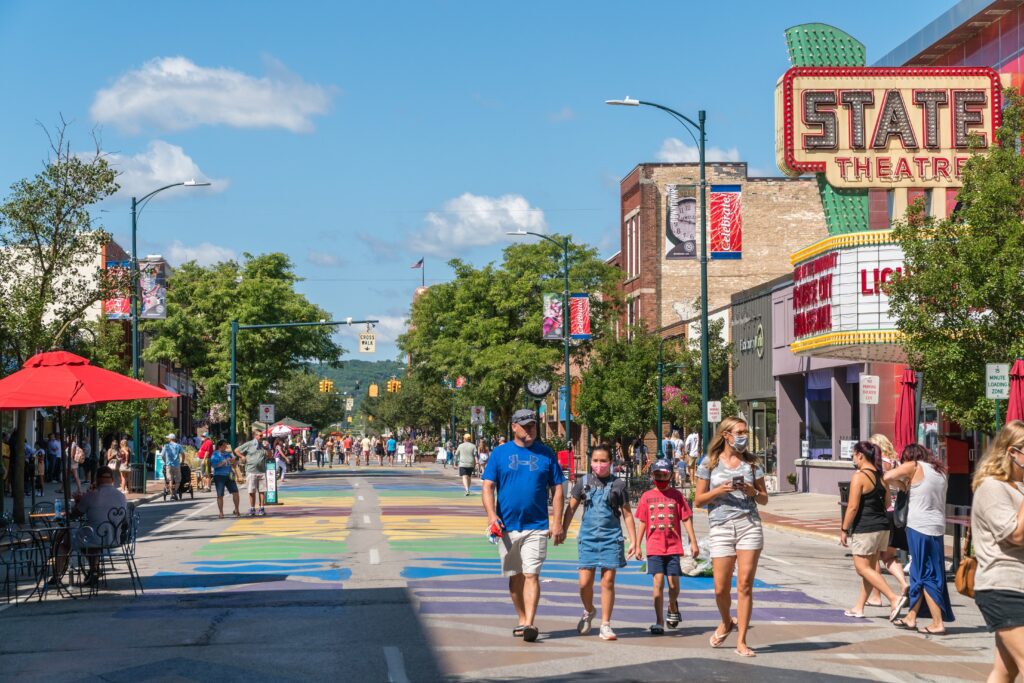To experience the largest sand dunes in North America, head to the San Luis Valley in Colorado.
Grand Sand Dunes National Park is a 30-square-mile natural marvel tucked away in the Sangre de Christo Mountains of Mosca in southern Colorado.
Monumental sand dunes backed by gorgeous mountains entice visitors with to spend time playing in the sand. They’re the tallest dunes in North America (the imposing star of the park, Star Dune, is 750 feet tall!) and they make for exciting rides atop a sand board or sand sled as well as calf-searing climbing experiences.
The park and its surroundings also afford plenty of other things to do away from the sands. You can explore Ponderosa Pine forests, grasslands and wetlands or gaze at the brilliant Milky Way at night. And you can even enjoy a beach experience on Medano Creek when it’s flowing (peak flow occurs in late May or early June; July, August and September are dry months).
Despite the park’s desert-like character, if you visit from May through October, it’ll have a coolness factor you’ll love — the literal, temperature-related kind. At that time, high temps will range from 70 to 85 degrees Fahrenheit, which will allow you and your family to remain comfortable as you dig into your activities. Still, you’ll want to plan on experiencing the dunes in the early morning or evening — sand temperatures can soar as high as 150 degrees Fahrenheit from late May through September.
September and the first half of October are the most idyllic times to visit the park. Not only are the sand temperatures lower throughout the day, but the aspen trees also sport a radiant gold hue.
Playing on the Dunes: Hiking, Sledding and Sandboarding
Given their colossal height, you’ll be able to see the dunes from miles away as you drive toward the park (five dunes are more than 700 feet tall), and once you start scaling and interacting with them, you’re likely to feel dwarfed. No worries — your ant-like status will remind you of the awesome grandeur of nature. And because the patterns and shapes of the dunes are constantly changing as a result of the wind, every experience you’ll have on them will be an entirely new one.
Consider launching your park visit at the visitor center, where you can watch a short film about the history of the dunes and view exhibits that explain and show their formation, and then head for the heights.
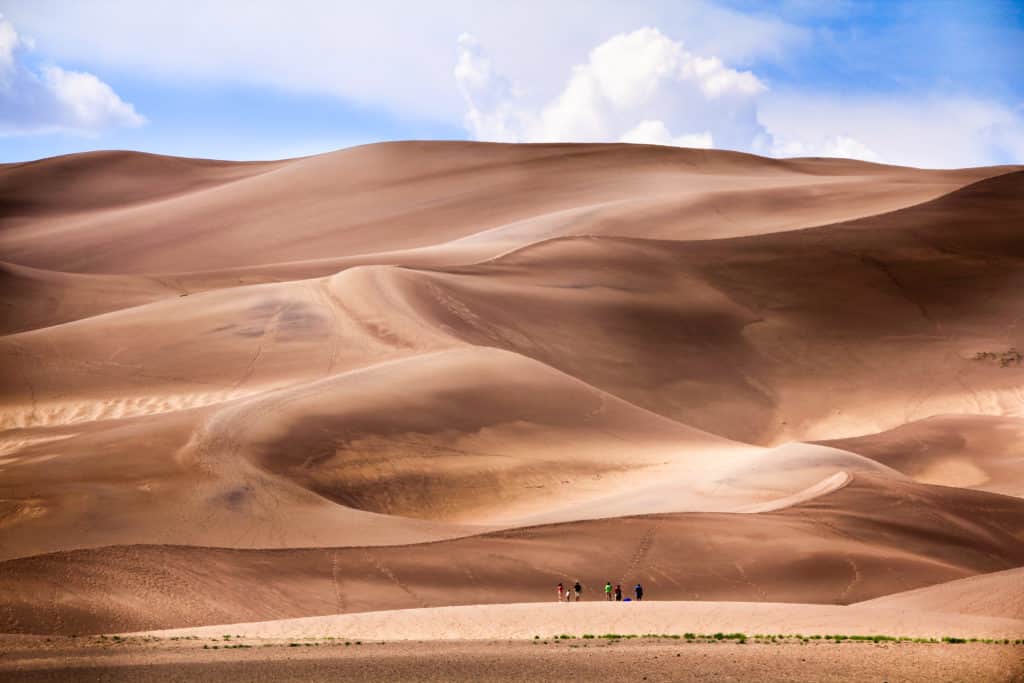
Hiking
Walking uphill on sand isn’t easy and hiking the largest dunes probably isn’t the best activity for those with little ones in tow. If you want to make the climb, you can reserve energy by hiking up and then along the crests of the dunes where the incline is shallower and the sand more packed. On the bright side, when you hike the dunes, you likely won’t have to contend with heavy crowds because of the challenge involved. However difficult the hike may be, the stunning views at the tops will make the effort feel totally worthwhile. The park also offers a limited number of sand wheelchairs for loan. For more accessibility information, read this page.
If you want to hike the pyramidal-shaped Star Dune, the tallest dune in North America, it’s best to access it from its base along the Medano Creek bed. The roughly 8-mile round-trip hike will take you anywhere from six to nine hours, depending on how acclimated you are to high altitudes and reduced oxygen levels.
Stargazing
The park is a designated International Dark Sky Park and an incredible place to stargaze, enjoy gentle night breezes and listen to the calls of nocturnal animals like owls, coyotes, frogs and toads. You’ll see the most stars on moonless nights. But for a once-in-a-lifetime experience, hike the dunes at night at the time of the full moon — you won’t even need a flashlight. The park is open 24 hours a day.
Sand Sledding
Opt for sand sledding if you have no experience with board sports and would rather not learn how to sandboard during this trip, or if you have young kids along for the ride. Whatever approach you choose for sliding down the dunes, the high-speed, adrenaline-filled ‘rocket ride’ in warm weather may become your family’s new activity addiction — prepare to climb and descend, oh, about a gazillion times.
Tip: Plan ahead to rent a sand sled and sandboards — you can’t use equipment that’s meant for snow on sand; you’ll need specialty gear and the wax that makes them extra slick. Here are two places where you can rent the necessary items (both are outside the park): Kristi Mountain Sports in Alamosa and Great Sand Dunes Oasis, near the park entrance about 4 miles from the Great Sand Dunes Visitor Center (rentals available from April to mid-October). Peruse this list for other outfitters.
Wear shoes when hiking the dunes—the sand gets very hot. When riding the sandboard, you’ll need to go barefoot or wear socks and hold your footwear as you slide down.
Sandboarding
Hop on a sandboard and glide down the dunes for an experience like no other. The park offers sand slopes of varying heights. It’s best to go with the small or medium-sized slopes if you have young kids (hike 0.7 miles from the Dunes Parking Area to reach these slopes). Adults and teens, however, may want to sandboard on the longer slopes at the top of the first high ridge (about a 1.25-mile hike from the parking lot).
Beyond the Dunes: Creek, Wetlands, Forest, Lake and Road Adventures in Great Sand Dunes National Park
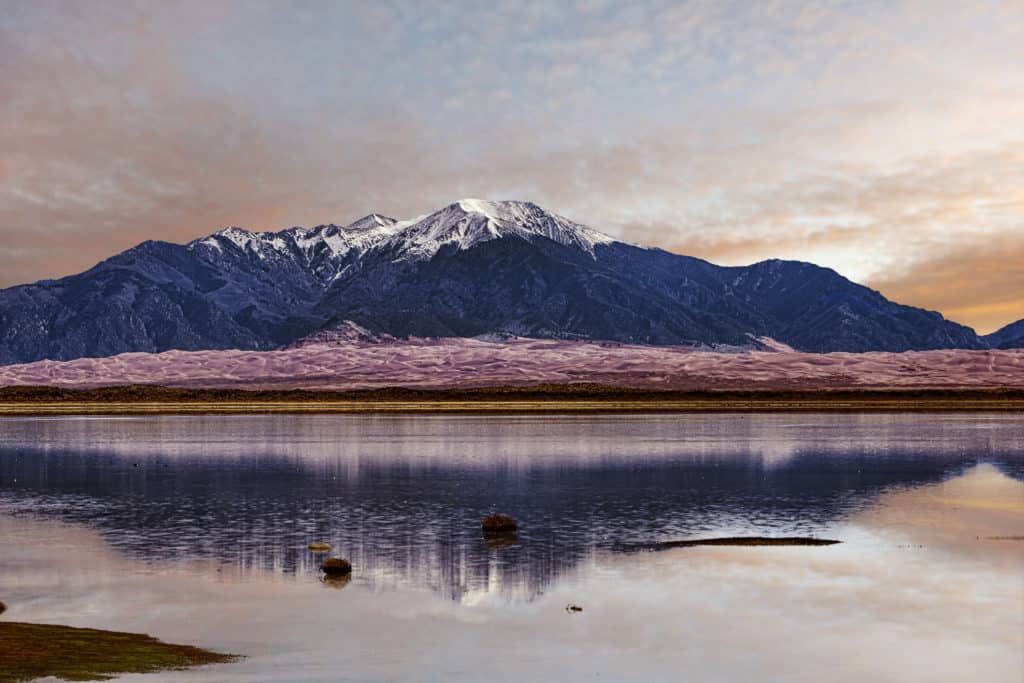
Beach Experiences at Medano Creek
Snowfall fills the Medano Creek seasonally, and your kids will have a blast building sandcastles alongside the creek and splashing and floating on a raft or inner tube. Make sure to bring life jackets if you plan on rafting. Up to 20-inch-high waves can occur during surge flow times (late May and early June). Raised sand islands form when the creek bed is full and they make for ideal picnic sites. Set up an umbrella, plop your cooler down and feast away.
Check on creek water conditions ahead of your trip here and if you visit in late May or early June, avoid crowds by going during the week rather than the weekend.
Walk the Forest Trails
When the dunes get hot, head for the park’s shady forests. The Montville Nature Trail’s highpoint offers amazing views of Mt. Herald, and the Mosca Pass Trail winds through aspen and evergreen forests as it follows a small creek through a pass in the Sangre de Cristo mountains.
Follow an Alpine Trail
Medano Lake Trailhead, accessed from the Medano Pass Primitive Road, climbs 2000’ through meadows and forests. The route involves a longer hike or drive than other trails in the park, but you’ll end up at beautiful, mountain-rimmed Lower Sand Creek Lake.
Explore the Grasslands and Shrublands
Grasslands and shrublands surround the dunefield on three sides. If you’re seeking solitude, plenty of open space and views of wildlife, head to these oases — and you won’t even need to follow a trail to get to them. You can cover many miles of this type of terrain from the park entrance road, between the park entrance sign and the visitor center.
See the Sunflowers
Afternoon thunderstorms are the name of the weather game in the park during July and August, and they can disrupt your activities if you visit then. But that fact shouldn’t deter you from visiting the park while summer is in full swing. The rain fuels the growth of millions of prairie sunflowers on the dunes and grasslands, and the visual payoff is huge — you’ll be treated to endless blankets of shimmering yellow.
Drive the Medano Pass Primitive Road in a 4WD Vehicle
This 22-mile drive is a must-do if you’re visiting the park in late September or early October when the fall foliage is spectacular. But the park mandates that you do it in a high-clearance 4-wheel drive vehicle because of the deep sands and creek crossings encountered along the route (the road traverses the creek nine times before reaching Medano Pass). Learn more here.
Other Things to Do When Visiting Grand Sand Dunes National Park
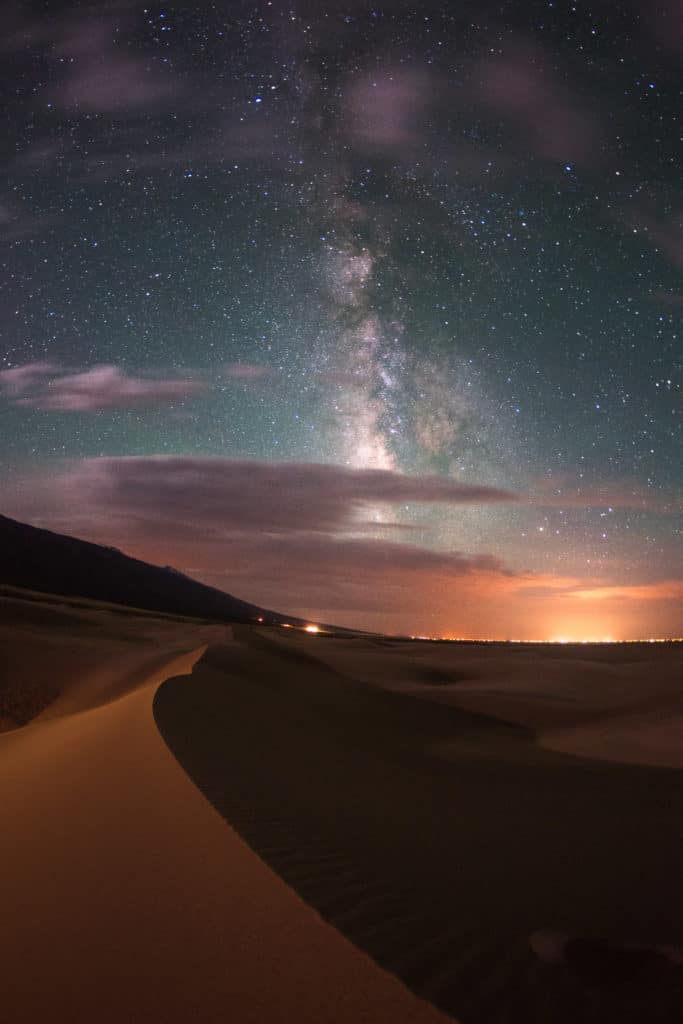
See Zapata Falls, a secluded 25-foot waterfall encased in a crevasse. You’ll have to walk about a half-mile and wade across some chilly water, but that’s just the sort of break you need from the high temps of the dunes in summer. The waterfall is wonderful in its own right, but you also won’t believe the views of the Great Sand Dunes you get from the parking lot. Visit during sunrise or sunset when golds, pinks and purples color the landscape.
More than 20,000 Sandhill Cranes migrate to the San Luis Valley in spring and fall, making it a crane hotspot. See the majestic creatures at the Monte Vista National Wildlife Refuge.
Sample the family-oriented charms of nearby Alamosa and Creede. Alamosa, located 34.3 miles from the park, is a great place for the family to stay when visiting Great Sand Dunes National Park. While there, take them to Alamosa National Wildlife Refuge to spy migratory birds and ride the acclaimed Cumbres & Toltec Scenic Railroad that goes from southern Colorado to northern New Mexico. Immerse everyone in mural and cowboy art at the Luther Bean Museum, play in the fort like real Old West heros at the Fort Garland Museum, visit and even feed the gators at Colorado Gators Reptile Park (there are more than 300 of them!). An hour’s drive from Alamosa is the Creede Repertory Theater (the season goes from May through September) where you can check out a live show or catch the annual KID Show – a free all-original show fully produced by local students in only three weeks!
10 of Colorado’s Best-Kept Secrets: Ice lakes, proghorn and Colorado wine country. (And that’s just the start.)

